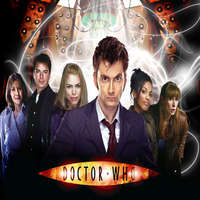
The Companions
CBUB Wins: 0
CBUB Losses: 0
CBUB Ties: 0
Win Percentage: 0%
Added by: Redemption X
In the long-running BBC television science fiction programme Doctor Who and related works, the term "companion" refers to a character who travels with, and shares the adventures of the Doctor. In most Doctor Who stories, the primary companion acts as both deuteragonist and audience surrogate. He or she (more commonly she) provides the lens through which the viewer is introduced to the series. The companion character, many times, furthers the story by asking questions and getting into trouble, or by helping, rescuing or challenging the Doctor. This designation is applied to a character by the show's producers, and appears in the BBC's promotional material and off-screen fictional terminology. Until the modern revival of the series in 2005, the term was rarely used on-screen. The Doctor also refers to the show's other leads as his "friends" or "assistants"; the British press have also used the latter term.
When Doctor Who was created, the dramatic structure of the programme's cast was rather different from the hero-and-sidekick pattern that emerged later. Initially, the character of the Doctor was unclear, with uncertain motives and abilities. The protagonists were schoolteachers Ian Chesterton and Barbara Wright, who provided the audience's point-of-view in stories set in Earth's history and on alien worlds. Ian in particular served the role of the action hero. The fourth character was the Doctor's granddaughter Susan, who (though initially presented as an "unearthly child") was intended as an identification figure for younger viewers.
When the programme changed to colour in 1970, its format changed: the Doctor was now Earth-bound, and acquired a supporting cast by his affiliation with the paramilitary organisation United Nations Intelligence Taskforce (UNIT). The Third Doctor, more active and physical than his predecessors, made the role of the "action hero" male companion redundant. In the 1970 season the Doctor was assisted by scientist Liz Shaw and Brigadier Lethbridge-Stewart, along with other UNIT personnel (such as Sergeant Benton). The intellectual Shaw was replaced by Jo Grant in the 1971 season, and as the programme returned to occasional adventures in outer space, the format shifted once more: while UNIT continued to provide a regular "home base" for Earth-bound stories, in stories on other planets the Doctor and Jo became a two-person team with a close, personal bond. This pattern, the Doctor with a single female companion, became a template from which subsequent episodes of Doctor Who rarely diverged. The "heroic male" type occasionally returned (for example, Harry Sullivan, Adric, Turlough, Mickey Smith, Jack Harkness and Rory Williams), but the single female companion was Doctor Who's staple.
The character of Harry Sullivan was created by the production team when it was expected that the Fourth Doctor would be played by an older actor who would have trouble with the activity expressed by his predecessor. In the event, the Fourth Doctor part went to 40-year-old Tom Baker and the part of Harry, no longer required for the action role, was reduced.
CBUB Match Record:
No Regular Play Records Available
No Fantasy Draft Records Available
